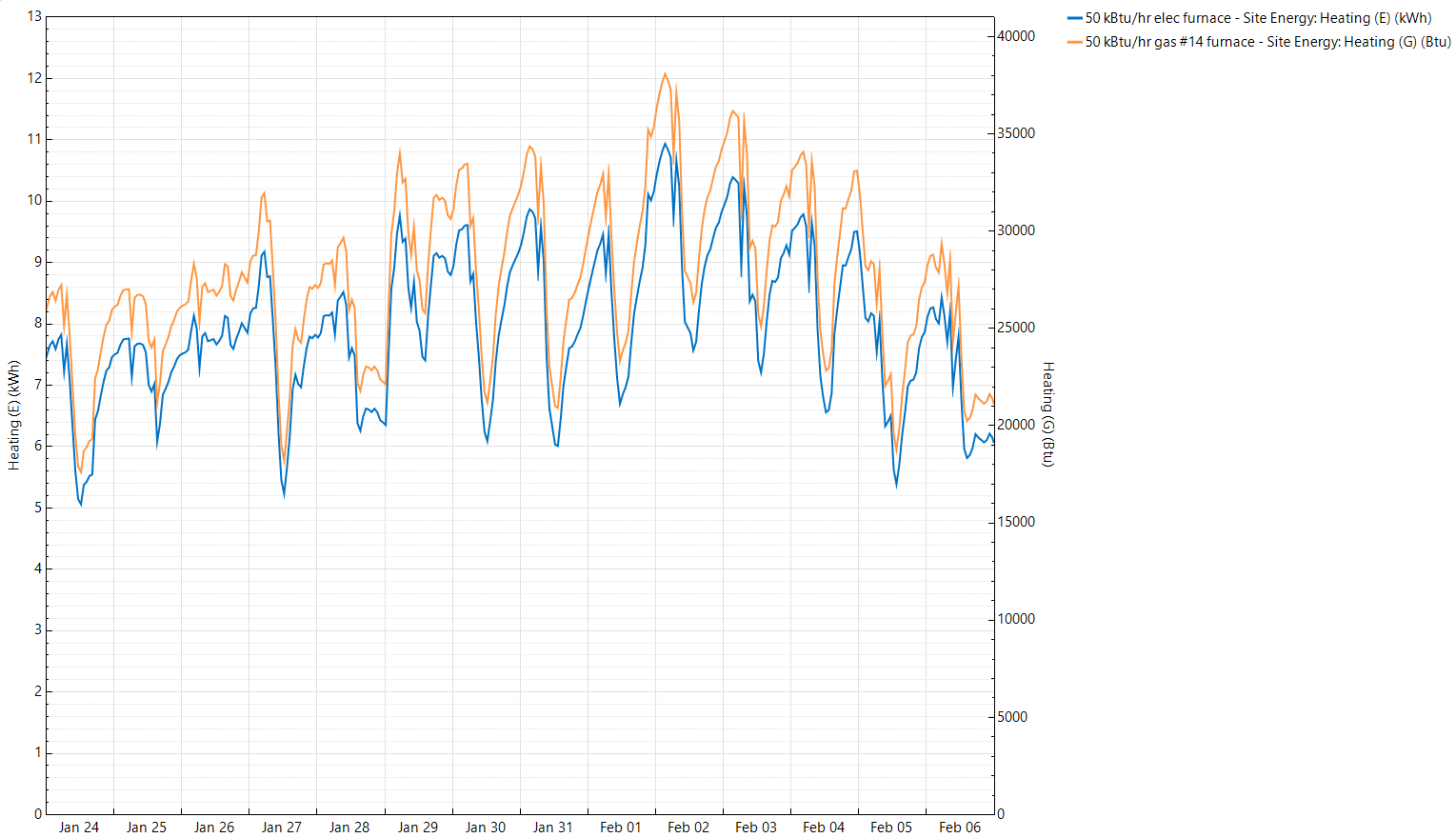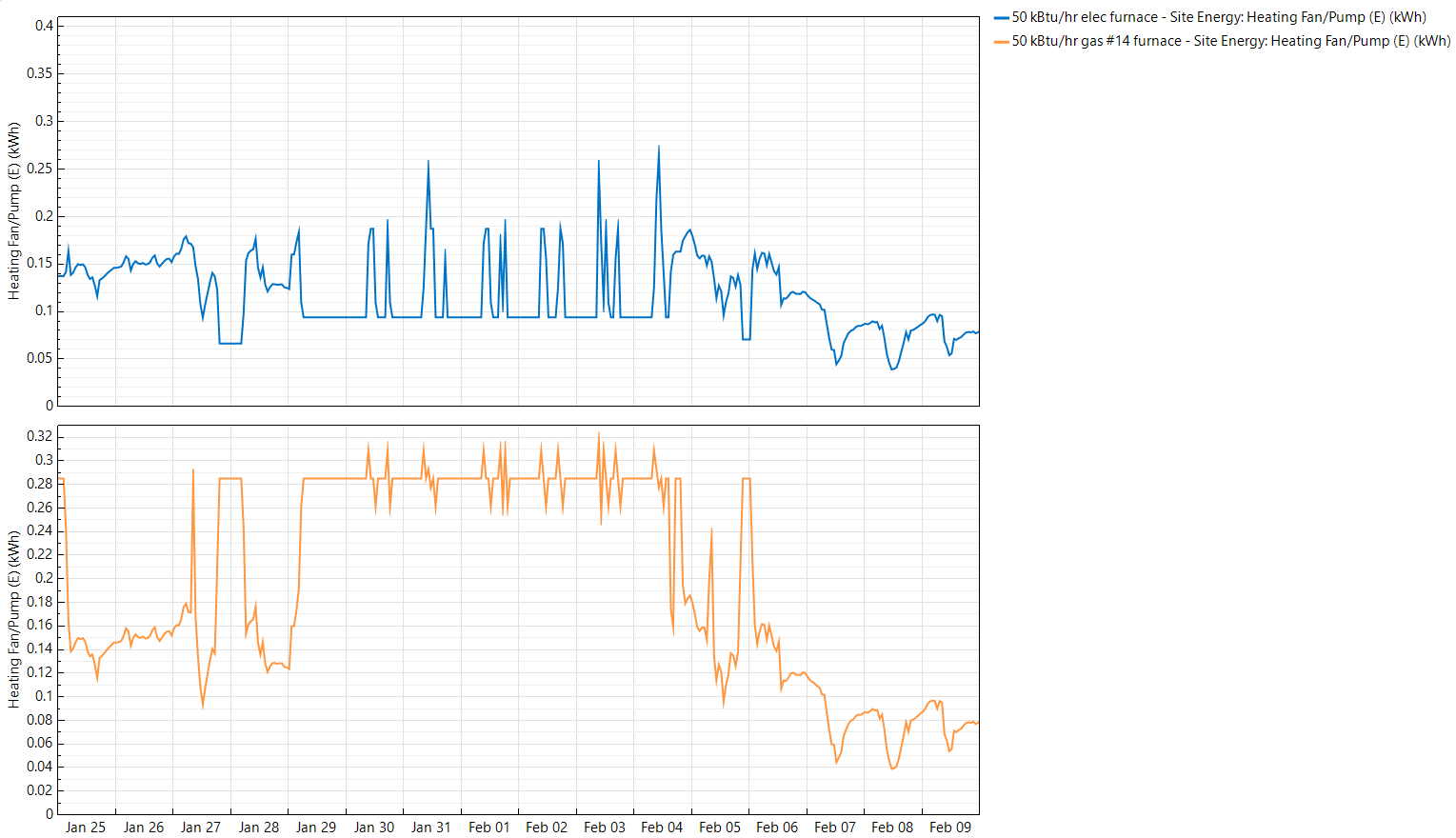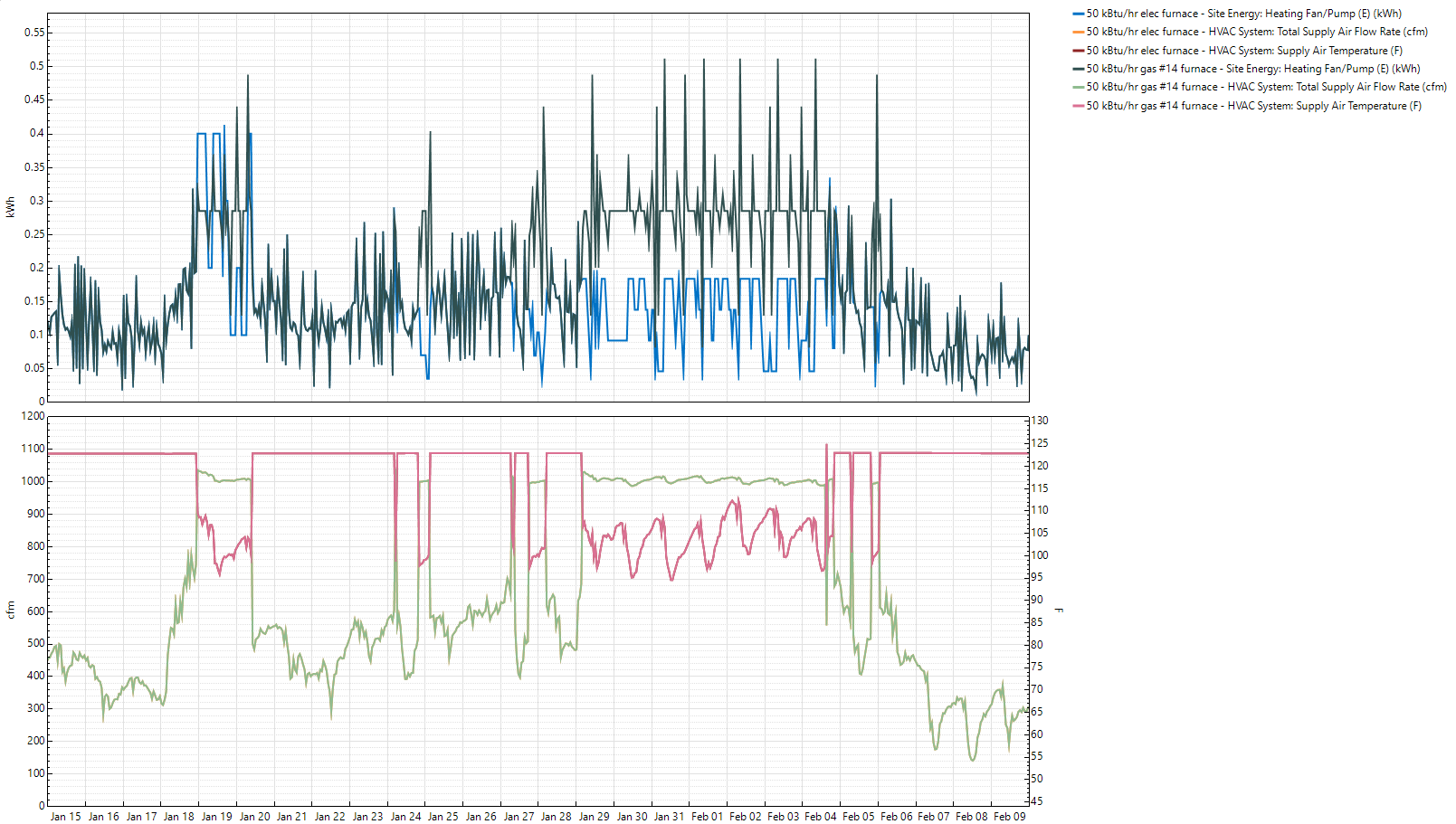BEopt electric furnace strange behavior
Two identical BEopt residential designs, one with a gas furnace and the other with an electric furnace, behave the same with one exception. Regardless of whether the electric furnace is sized or autosized, there are a few times, even days, when its output goes to zero. There are never any unmet hours. In DView the delivered energy is exactly the same except for these few periods when delivered energy from the electric furnace drops to zero. These are not periods of extreme cold although they are during periods of low temperatures. Delivered energy from the gas furnace, on the other hand, seems plausible--no such "dropouts." As a result, annual delivered energy for heating is always 65.1 for the electric furnace, but 74.8 MMBtu for the gas furnace. Again--no unmet hours ever show up and the living space remains at the setpoint despite delivered energy temporarily dropping to zero.
Any thoughts on this?








Graphs of the anomalies would help
Hopefully this provides the chart suggested. If it does, then blue is the electric furnace, usually hiding the identical delivered energy of the gas furnace. Instead of continuing to cover up the orange, it drops to zero. I've also noticed that site energy of the electric furnace during these "episodes" does not drop to zero, but continues just as does the output of the gas furnace.
https://imgur.com/a/VUSssTs
There must be another heating source if the zone temp remains unchanged. Or a bug where the electric heater sill provides hot supply air while energy use goes to 0. I think there is another heater.
Could you please share your model? I developed a simple model in BEopt but I don't have such dropouts. It could be because of the 'space conditioning schedules'. I can help you further if you share the model.
Thanks for your interest and offer.
https://github.com/duerstad/files/blo...